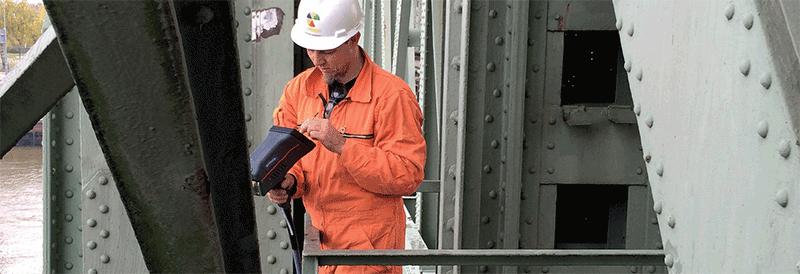Nebest, an engineering consultancy based in the Netherlands, was appointed to inspect and verify materials used in various old bridges all over the Netherlands. One of the bridges was “De Hef”, an 1877 steel railroad bridge that connects the Noordereiland Island in the river Maas with the Southern district Feyenoord in Rotterdam. By using PMI-MASTER Smart, a truly portable spark spectrometer, the team were able to quickly determine the weldability of material for maintenance works.

The Dutch authorities were keen to start maintenance work on “De Hef”. However, due to the age of the bridge, the materials used to build the bridge were not fully documented throughout the years. This meant Nebest had to identify the materials used and understand their carbon content. It’s well known that steels containing carbon above 0.22% are difficult to or don’t weld at all. Other elements influence weldability as well. So the new material being welded also had be to inspected for the carbon equivalent.
The team from Nebest, who specialise in solutions for inspection and research in infrastructure, industrial, offshore, mechanical and electrical installations, were not allowed to demount any material from the historic listed bridge so the only option was to conduct an on-site analysis.
“The PMI-MASTER Smart’s real value is its ability to quickly and accurately determine the precise carbon content and the carbon equivalent of material.”
Carbon is measured with optical emission spectrometers (OES), which are usually too big and heavy to be used at hard to reach places like a bridge construction.
Nebest decided to go with Hitachi High-Tech’s PMI-MASTER Smart, a truly portable OES analyser. It’s small, 15 kg in weight, has an analytical performance that is comparable to laboratory quality and provides results fast. Ideal when measurements had to be taken in difficult to reach places.
When analysing the materials used on the “De Hef” bridge, Nebest found the PMI-MASTER Smart easy to use. Its real value however, was its ability to quickly and accurately determine the precise carbon content of materials. This allowed the team to decide the weldability of the original material directly on-site, providing significant savings.
The PMI-MASTER Smart was set-up with a library of the most common formulas to be able to calculate the important material properties on the basis of the chemical results. In this case, the carbon equivalent.
Learn more